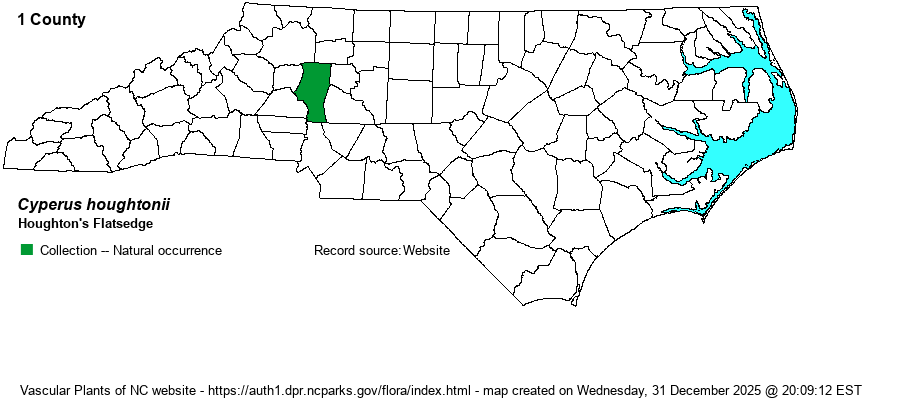| Author | Torrey | |
| Distribution | A single record, the specimen label merely stating "N.C." The specimen is correctly identified, but experts have annotated it with "Not likely collected in N. Carolina." This record apparently refers to Iredell County, as the USDA website shows this county of occurrence. Weakley (2020) does show this species as native in NC, as occurring in the Piedmont.
Ranges from MA and MN south to NC and IN. | |
| Abundance | Very rare and poorly known. Not conclusive to have occurred in the state. This species has a State Rank of SU (Undetermined), and is on the Watch List as W3, as there is no certain documentation. The website editors prefer a State Rank for such an uncertain-in-NC taxon being SR (Reported) instead of SU. | |
| Habitat | "Dry upland sites, shale barrens, rock outcrops, perhaps associated with mafic or calcareous rocks" (Weakley 2020). | |
| Phenology | Flowers and fruits June-September. | |
| Identification | See Weakley (2020). | |
| Taxonomic Comments | None?
The genus Cyperus is mostly tropical and warm-temperate in distribution; thus, in NC it is much commoner in the Coastal Plain than in the Mountains and Piedmont. Most species have 1-few flowering stems (culms) from grasslike basal leaves, plus a few stem leaves. At the summit is an inflorescence of very open and branched, or tightly packed, spikes, varying among species from brown to golden brown to straw-color to reddish. The arrangement of the spikelets is important, whether like a hand (digitate) or in paired or alternate rows (pinnate); as is the shape of the achene (seed), whether bi-convex in cross-section or triangular. As a group, Cyperus tends to be weedy and readily enters disturbed ground; this is true for many natives as well as all the aliens. In recent years, following DNA research, the genus has incorporated several genera that in RAB (1968) or other manuals were separate: Hemicarpha, Lipocarpha, and Kyllinga. | |
| Other Common Name(s) | None | |
| State Rank | SU [SR] | |
| Global Rank | G4? | |
| State Status | W3 | |
| US Status | | |
| USACE-agcp | | |
| USACE-emp | | |

